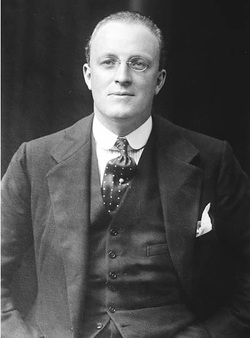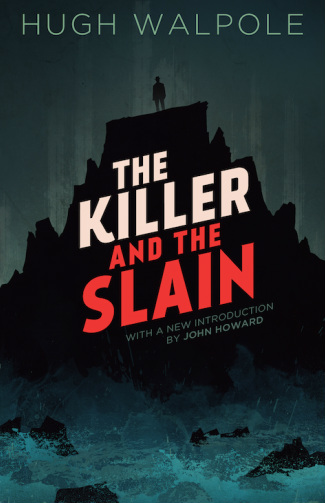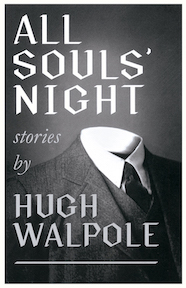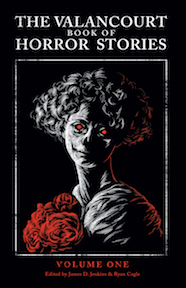|
BOOK DETAILS
Trade paper ISBN-13: 978-1939140999 List Price: $16.99 U.S. Pages: 194 Published: 2014 |
The Killer and the Slain (1942)
Hugh Walpole With a new introduction by John Howard Book Description
As boys, Jimmie Tunstall was John Talbot’s implacable foe, never ceasing to taunt, torment, and bully him. Years later, John is married and living in a small coastal town when he learns, much to his chagrin, that his old adversary has just moved to the same town. Before long the harassment begins anew until finally, driven to desperation, John murders his tormentor. Soon he starts to suffer from frightening hallucinations and his personality and physical appearance begin to alter, causing him increasingly to resemble the man he killed. Is it merely the psychological effect of his guilt, or is it the manifestation of something supernatural—and evil? The tension builds until the chilling final scene, when the horrifying truth will be revealed about the killer—and the slain. The works of the prolific and phenomenally popular Sir Hugh Walpole (1884-1941) have been neglected since his death, but his “macabre” tales, of which The Killer and the Slain (1942) is the best, deserve rediscovery. A psychological horror story in the tradition of The Turn of the Screw and The Strange Case of Dr. Jekyll and Mr. Hyde, Walpole’s posthumous novel is reprinted for the first time in this new edition, which features an introduction by John Howard. |
reviews
“[An] exercise in the macabre, the bizarre, the psychologically unaccountable ... worked out with conspicuous craft and dexterity ... ingenious, accomplished.” – Times Literary Supplement
“[A] masterful blending of suspense, horror and deep-etched character ... spine-chilling.” – Publishers Weekly
“Well done, with more sex than one associates with Walpole ... belongs in the gallery of pathological horror stories.” – Kirkus Reviews
“[W]ill entangle the imaginative reader. It is undoubtedly macabre. Maturity and assurance of style add to its impressiveness.” – Sydney Morning Herald
“[A] masterful blending of suspense, horror and deep-etched character ... spine-chilling.” – Publishers Weekly
“Well done, with more sex than one associates with Walpole ... belongs in the gallery of pathological horror stories.” – Kirkus Reviews
“[W]ill entangle the imaginative reader. It is undoubtedly macabre. Maturity and assurance of style add to its impressiveness.” – Sydney Morning Herald
ALSO AVAILABLE THROUGH ONLINE RETAILERS
AUTHOR BIOGRAPHY

Hugh Walpole was born in Auckland, New Zealand in 1884 and as a boy was sent to England to be educated. Bullied and miserable at school, young Walpole took refuge in the library, where he devoured the novels of Austen, Scott, Trollope and others, and he knew from an early age that he wanted to become a novelist. From 1903 to 1906, Walpole studied at Emmanuel College, Cambridge, and it was during this time that he first began to acknowledge his homosexuality. His attention was fixated for a time on A. C. Benson, whom he met as an undergraduate and who helped Walpole enter into a correspondence with Henry James, whom Walpole greatly admired and whose works would influence Walpole’s own.
Walpole’s first novel was The Wooden Horse (1909), but his first success was Mr. Perrin and Mr. Traill (1911), which received good reviews and sold well; it also earned the admiration of Arnold Bennett, who would go on to be a good friend. Walpole’s career was further aided by a 1914 article by James in the Times Literary Supplement, in which he ranked Walpole with D. H. Lawrence and Compton Mackenzie as one of the important young English writers of his generation.
During the First World War, Walpole was rejected for service because of poor eyesight, so he went to Russia and assisted at hospitals, on one occasion single-handedly saving a Russian officer and earning the Cross of St. George. His experiences in Russia helped form the basis for his successful novels The Dark Forest (1916) and The Secret City (1919) and also earned him a CBE in 1918.
After the war, Walpole continued to write prolifically, usually publishing at least one very long novel each year. His output was diverse and included the popular “Herries” cycle of novels set in 18th-century England, as well as boys’ stories featuring the character Jeremy, and what he called his “macabre” novels, including Portrait of a Man with Red Hair (1925). In addition to his writing, Walpole toured America extensively as a public speaker, winning great popularity and earning huge sales for his books in the United States.
During the 1930s, Walpole spent time in Hollywood, writing scripts for the films David Copperfield (1935) and Little Lord Fauntleroy (1936), and in 1937 he accepted a knighthood. At the start of the Second World War, Walpole remained in London and continued to write, working on his final macabre novel, The Killer and the Slain (1942), which was published posthumously. Walpole had long suffered from diabetes and his poor health, combined with the strain of his furious writing pace, probably contributed to his early death at age 57 in 1941.
Walpole’s reputation had already begun to decline by the 1930s as he was increasingly seen as outdated by many critics, and it took a devastating hit when he was parodied in Somerset Maugham’s Cakes and Ale (1930). A Times obituary that characterized Walpole as a “workmanlike” writer, “ambitious,” and “a sentimental egotist” who “was not popular among his fellow-writers” further damaged his reputation, which is only now seeing signs of a revival with recent reprints (and a stage adaptation) of the Herries novels in the UK and a new Valancourt edition of The Killer and the Slain.
Walpole’s first novel was The Wooden Horse (1909), but his first success was Mr. Perrin and Mr. Traill (1911), which received good reviews and sold well; it also earned the admiration of Arnold Bennett, who would go on to be a good friend. Walpole’s career was further aided by a 1914 article by James in the Times Literary Supplement, in which he ranked Walpole with D. H. Lawrence and Compton Mackenzie as one of the important young English writers of his generation.
During the First World War, Walpole was rejected for service because of poor eyesight, so he went to Russia and assisted at hospitals, on one occasion single-handedly saving a Russian officer and earning the Cross of St. George. His experiences in Russia helped form the basis for his successful novels The Dark Forest (1916) and The Secret City (1919) and also earned him a CBE in 1918.
After the war, Walpole continued to write prolifically, usually publishing at least one very long novel each year. His output was diverse and included the popular “Herries” cycle of novels set in 18th-century England, as well as boys’ stories featuring the character Jeremy, and what he called his “macabre” novels, including Portrait of a Man with Red Hair (1925). In addition to his writing, Walpole toured America extensively as a public speaker, winning great popularity and earning huge sales for his books in the United States.
During the 1930s, Walpole spent time in Hollywood, writing scripts for the films David Copperfield (1935) and Little Lord Fauntleroy (1936), and in 1937 he accepted a knighthood. At the start of the Second World War, Walpole remained in London and continued to write, working on his final macabre novel, The Killer and the Slain (1942), which was published posthumously. Walpole had long suffered from diabetes and his poor health, combined with the strain of his furious writing pace, probably contributed to his early death at age 57 in 1941.
Walpole’s reputation had already begun to decline by the 1930s as he was increasingly seen as outdated by many critics, and it took a devastating hit when he was parodied in Somerset Maugham’s Cakes and Ale (1930). A Times obituary that characterized Walpole as a “workmanlike” writer, “ambitious,” and “a sentimental egotist” who “was not popular among his fellow-writers” further damaged his reputation, which is only now seeing signs of a revival with recent reprints (and a stage adaptation) of the Herries novels in the UK and a new Valancourt edition of The Killer and the Slain.



